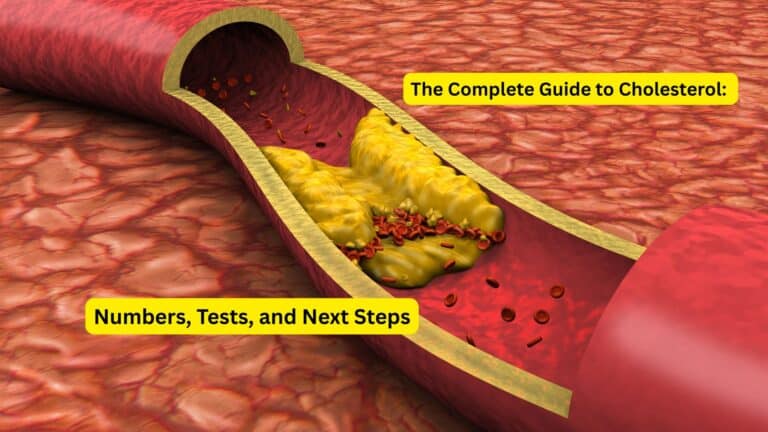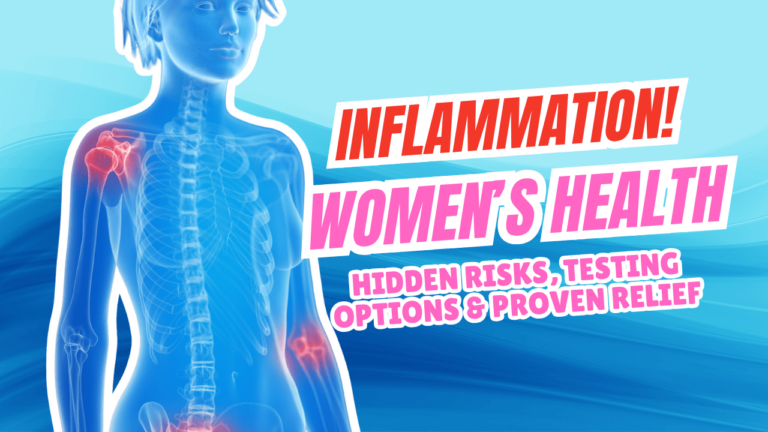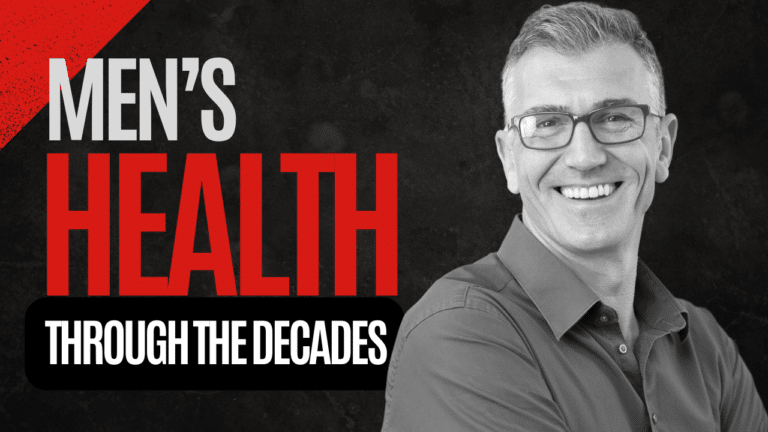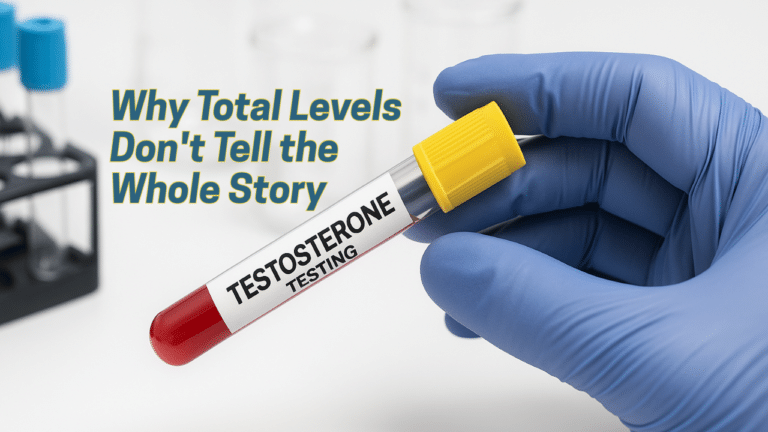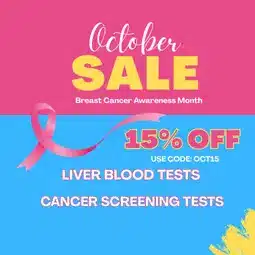Hormones act as the body’s chemical messengers, orchestrating everything from metabolism and mood to reproduction and growth. These powerful signaling molecules work behind the scenes to maintain balance and coordinate complex physiological processes throughout our lives. However, as we age, this intricate hormonal symphony begins to change, with some hormones declining while others shift their rhythms and patterns.
Understanding how hormones change with age empowers individuals to recognize normal aging processes, differentiate them from potential health concerns, and take proactive steps to maintain hormonal balance and vitality throughout their lives. This comprehensive overview examines the major hormonal shifts that occur during aging and explores how monitoring and lifestyle interventions can help optimize hormonal health.
Growth Hormone (GH) and IGF-1: Decline with Age
Growth hormone and its mediator, insulin-like growth factor-1 (IGF-1), represent one of the most significant hormonal changes associated with aging. These hormones, which peak during adolescence to support growth and development, begin a steady decline that continues throughout adult life. The implications of this decline extend far beyond height, affecting body composition, metabolism, and overall vitality in ways that many people don’t immediately connect to hormonal changes.
The Somatopause Phenomenon
Growth hormone secretion declines by approximately 15% per decade after the twenties, a process scientists have termed “somatopause.” This gradual but persistent decline represents one of the most predictable aspects of hormonal aging, affecting virtually everyone regardless of lifestyle or health status.
Unlike the dramatic hormonal changes of menopause, somatopause occurs gradually over decades, making its effects subtle and often attributed to “normal aging” rather than recognized as hormonal changes. This slow progression can mask the significant impact that declining growth hormone has on multiple body systems.
Physical and Metabolic Consequences
The effects of declining growth hormone and IGF-1 become increasingly apparent as the decline accumulates over time. Increased fat accumulation, particularly around the midsection, often represents one of the earliest visible signs. Simultaneously, muscle mass begins to decrease while bone density gradually declines, contributing to the physical changes many people associate with getting older.
Performance and energy levels also suffer as growth hormone levels drop. Physical endurance decreases, recovery from exercise takes longer, and the overall sense of vitality that characterizes youth begins to fade. These changes create a cascade effect where reduced activity further accelerates the loss of muscle and bone mass.
Research on Growth Hormone Supplementation
The recognition of growth hormone’s role in aging has sparked interest in supplementation as an anti-aging intervention. Some studies show promise for improving muscle strength and reducing fat mass, but the research remains complex and sometimes contradictory. Safety concerns, including potential links to increased cancer risk and other adverse effects, have tempered enthusiasm for widespread use.
Current medical consensus emphasizes that growth hormone supplementation should only be considered under strict medical supervision for individuals with documented deficiencies, rather than as a general anti-aging strategy.
Sex Hormones: Testosterone, Estrogen, and Progesterone
Perhaps no hormonal changes are more well-known or have more dramatic effects than the decline in sex hormones that occurs with aging. However, the patterns and timing of these changes differ significantly between men and women, creating distinct experiences and health implications. Understanding these differences helps individuals prepare for and manage the transitions that affect virtually everyone who lives long enough to experience them.
Testosterone Decline in Men
Men experience a gradual but persistent decline in testosterone production that begins around age 30 and continues at approximately 1% per year. Unlike the abrupt hormonal changes women experience during menopause, this decline occurs slowly enough that symptoms may develop so gradually they’re initially attributed to stress, aging, or lifestyle factors.
The symptoms of declining testosterone extend beyond the commonly discussed effects on libido. Decreased bone density increases fracture risk, while muscle mass and strength decline more rapidly than would occur from aging alone. Mood changes, including increased irritability, depression, and decreased motivation, can significantly impact quality of life and relationships.
Energy levels and cognitive function may also be affected, with some men experiencing decreased concentration, memory problems, and reduced mental sharpness. These cognitive effects are often subtle but can accumulate to create noticeable changes in work performance and daily functioning.
Menopause and Female Hormone Changes
Women experience the most dramatic hormonal transition of adult life during menopause, which typically occurs around age 50 and represents the end of reproductive capacity. Unlike the gradual testosterone decline in men, estrogen and progesterone levels drop sharply over a relatively short period, creating intense symptoms that demand attention and management.
The immediate symptoms of menopause—hot flashes, night sweats, mood swings, and sleep disturbances—represent just the beginning of estrogen’s effects on the body. The loss of estrogen’s protective effects on bone density leads to accelerated bone loss, significantly increasing osteoporosis risk. Cardiovascular health also suffers, as estrogen’s protective effects on blood vessels and cholesterol levels disappear.
Metabolic changes during menopause often result in weight gain, particularly around the midsection, and increased insulin resistance. These changes can set the stage for diabetes and metabolic syndrome if not properly managed through lifestyle modifications and, when appropriate, medical interventions.
Thyroid Hormones: Subtle Shifts
Thyroid hormone changes with aging often fly under the radar, occurring so gradually and subtly that they’re easily overlooked or misattributed to other causes. However, these changes can significantly impact metabolism, energy levels, and overall well-being. The thyroid’s role as the body’s metabolic control center means that even small changes can have far-reaching effects throughout multiple body systems.
Declining Thyroid Function
Aging brings mild declines in thyroid hormones T3 and T4, with some individuals developing subclinical hypothyroidism—a condition where thyroid function is decreased but not quite low enough to meet the criteria for overt hypothyroidism. This borderland condition creates symptoms that are often vague and easily dismissed.
The decline in thyroid function affects the body’s ability to regulate metabolism efficiently. This can contribute to weight gain, fatigue, cold intolerance, and decreased mental sharpness. Hair may become thinner and drier, while skin loses some of its moisture and elasticity.
Metabolic and Mood Connections
Thyroid hormones influence virtually every cell in the body, so their decline affects multiple systems simultaneously. Energy production at the cellular level decreases, contributing to the fatigue and reduced stamina that many people experience with aging. Mental processes may slow, with some individuals experiencing memory problems or difficulty concentrating.
Mood changes associated with thyroid decline can include depression, anxiety, and irritability. These psychological symptoms often develop so gradually that they’re attributed to life circumstances or general aging rather than recognized as potentially treatable hormonal changes.
Cortisol and Stress Hormones
The body’s stress response system undergoes significant changes with aging, altering how we respond to both physical and psychological stressors. These changes in cortisol production and rhythm can have profound effects on sleep, immune function, and overall health. Understanding these shifts helps explain why stress management becomes increasingly important as we age and why older adults may be more vulnerable to the negative effects of chronic stress.
Disrupted Cortisol Rhythms
One of the most significant changes in stress hormone function involves the flattening of cortisol’s normal circadian rhythm in older adults. Normally, cortisol levels peak in the morning to help us wake up and gradually decline throughout the day, reaching their lowest point at night to facilitate sleep.
With aging, this pattern becomes less pronounced, with cortisol levels remaining more elevated in the evening than they should be. This disrupted rhythm contributes to sleep problems, as the body doesn’t receive the clear hormonal signal that it’s time to rest and recover.
Sleep and Inflammation Consequences
The altered cortisol rhythm creates a cascade of health problems that extend far beyond sleep quality. Elevated evening cortisol interferes with the deep, restorative sleep that’s essential for physical recovery and memory consolidation. Poor sleep quality then contributes to increased inflammation throughout the body.
Chronic low-grade inflammation, partly fueled by disrupted cortisol patterns, accelerates aging processes and increases the risk of age-related diseases. This creates a self-perpetuating cycle where stress hormone dysfunction leads to inflammation, which further disrupts hormone function and accelerates aging.
Antidiuretic Hormone (ADH) and Fluid Balance
Changes in antidiuretic hormone represent one of the less well-known but potentially significant hormonal shifts that occur with aging. These changes affect the body’s ability to maintain proper fluid balance, leading to complications that can significantly impact health and quality of life. Understanding ADH changes helps explain some of the urinary and hydration issues that become more common with advancing age.
Increased ADH Sensitivity
Aging brings increased levels of ADH and heightened tissue sensitivity to this hormone, fundamentally altering how the kidneys handle fluid balance. This enhanced sensitivity can lead to excessive water retention in some situations while paradoxically contributing to dehydration risk in others.
The kidneys’ response to ADH becomes less predictable with age, making it more difficult for the body to maintain optimal hydration status. This can result in electrolyte imbalances that affect everything from blood pressure to cognitive function.
Practical Health Implications
These ADH changes contribute to several age-related health issues that significantly impact daily life. Nocturia—the need to urinate frequently during the night—often results from altered ADH patterns and kidney function. This disrupts sleep quality and increases fall risk due to nighttime bathroom trips.
Dehydration risk also increases, as the aging kidney becomes less efficient at concentrating urine when necessary. Older adults may not feel thirsty when they should, while their kidneys struggle to conserve water effectively, creating a dangerous combination that can lead to serious health complications.
Broader Endocrine System Dynamics
The aging process affects not just individual hormones but the entire endocrine system’s ability to maintain coordination and balance. The hypothalamic-pituitary axis, which serves as the body’s hormonal control center, undergoes changes that ripple throughout the entire system. These systemic changes help explain why aging affects multiple hormonal pathways simultaneously and why hormonal aging often involves complex interactions between different systems.
Hypothalamic-Pituitary-Adrenal Axis Changes
The central control mechanisms for hormone production become less precise with aging, affecting feedback loops that normally maintain hormonal balance. The hypothalamus and pituitary gland, which coordinate hormone production throughout the body, become less sensitive to feedback signals, leading to less precise hormonal regulation.
These changes in central control help explain why multiple hormonal systems often become disrupted simultaneously during aging. Rather than isolated hormone deficiencies, aging typically involves systemic changes that affect the body’s ability to maintain hormonal homeostasis.
Early Molecular Changes
Recent research has revealed that significant age-related alterations in hormone-related proteins and signaling pathways begin as early as age 30 in organs such as the adrenal glands and vasculature. These molecular changes occur years before obvious symptoms develop, suggesting that hormonal aging begins much earlier than previously recognized.
These early changes affect how hormones are produced, transported, and utilized by target tissues. Understanding these molecular alterations provides insight into why some individuals experience hormonal aging symptoms earlier than others and why proactive monitoring and intervention may be beneficial.
Hormone Replacement and Emerging Therapies
As our understanding of hormonal aging has advanced, so have therapeutic options for managing age-related hormone deficiencies. However, hormone replacement therapy remains a complex field where benefits must be carefully weighed against risks. The key to successful hormone replacement lies in individualized assessment and ongoing monitoring rather than one-size-fits-all approaches.
Hormone Replacement Therapy in Women
Hormone replacement therapy for menopausal women has evolved significantly as research has provided clearer insights into benefits and risks. When appropriately prescribed and monitored, HRT can effectively manage menopausal symptoms while providing protection for bone density and possibly cognitive function.
However, the increased risks of certain cancers and cardiovascular complications mean that HRT decisions must be highly individualized. Factors such as age at initiation, duration of treatment, and individual risk factors all influence the benefit-to-risk ratio for each woman considering treatment.
Testosterone Therapy in Men
Testosterone replacement therapy for aging men remains an area of active research and debate. While testosterone therapy can effectively address symptoms of low testosterone, questions remain about long-term safety and appropriate candidate selection.
Evidence suggests that individualized care and ongoing monitoring are essential for men considering testosterone therapy. Regular assessment of benefits, side effects, and health markers helps ensure that therapy remains appropriate and safe over time.
Emerging Therapeutic Approaches
Research continues to explore new approaches to hormonal aging, including more targeted therapies that address specific hormonal pathways while minimizing risks. These emerging treatments may offer more precise interventions that provide benefits while avoiding the broader systemic effects of traditional hormone replacement.
Practical Testing and Monitoring
Understanding hormonal changes is only valuable if it leads to actionable insights that improve health outcomes. Modern laboratory testing makes it possible to monitor hormonal status with precision, enabling early detection of changes and informed decision-making about interventions. Regular monitoring empowers individuals to take proactive steps to maintain hormonal balance and optimize their aging experience.
Comprehensive Hormone Assessment
A thorough evaluation of hormonal status typically includes testing for multiple hormones that change with aging. Testosterone and estradiol levels provide insight into sex hormone status, while growth hormone and IGF-1 testing can reveal somatopause progression. Thyroid panels including TSH, T3, and T4 assess metabolic hormone function.
Cortisol testing, particularly when done at multiple times of day, can reveal disrupted circadian rhythms that contribute to sleep and stress problems. This comprehensive approach provides a complete picture of hormonal aging rather than focusing on isolated hormone deficiencies.
Walk-In Lab Testing Options
Walk-In Lab offers convenient, affordable access to comprehensive hormone testing that supports proactive aging management. These confidential tests enable individuals to monitor their hormonal status without the barriers of traditional healthcare systems, facilitating early detection and intervention.
Regular monitoring through accessible testing platforms allows for tracking changes over time, which is often more valuable than single-point measurements. This longitudinal approach helps identify trends and enables timely interventions to maintain optimal hormonal balance.
[COMMENT: Insert Walk-In Lab hormone testing product links here]
Empowering Proactive Management
The combination of education about hormonal aging and access to testing creates opportunities for proactive health management that were previously unavailable. Rather than waiting for symptoms to become severe enough to demand medical attention, individuals can monitor their hormonal status and take preventive action.
This proactive approach, combined with lifestyle modifications and appropriate medical interventions when necessary, offers the best opportunity to maintain vitality and quality of life throughout the aging process.
Frequently Asked Questions
Which hormones decline most with age?
Growth hormone shows the most consistent decline, decreasing by about 15% per decade after age 20. Sex hormones also decline significantly—testosterone gradually decreases in men starting around age 30, while estrogen and progesterone drop sharply during menopause in women around age 50. Thyroid hormones may also decline, and cortisol rhythms become disrupted with aging.
What age do most hormonal changes start?
Hormonal aging begins earlier than most people realize. Growth hormone decline starts in the twenties, testosterone begins decreasing around age 30 in men, and molecular changes in hormone-producing organs can be detected as early as age 30. However, the most dramatic changes occur during menopause for women (around age 50) and during andropause for men (typically in their 50s and 60s).
Can lifestyle slow hormonal decline?
Yes, lifestyle factors significantly influence hormonal aging. Regular exercise helps maintain growth hormone levels and testosterone production, while also supporting healthy cortisol rhythms. Good nutrition provides the building blocks for hormone production, adequate sleep supports hormonal balance, and stress management prevents excessive cortisol production that can disrupt other hormones.
Is hormone therapy safe?
Hormone therapy can be safe and effective when appropriately prescribed and monitored, but it requires individualized risk assessment. Benefits must be weighed against potential risks such as increased cancer risk or cardiovascular complications. The key is working with qualified healthcare providers who can assess individual risk factors and provide ongoing monitoring to ensure safety.
What tests should I get?
A comprehensive hormone assessment typically includes testosterone (for men) or estradiol (for women), thyroid panel (TSH, T3, T4), cortisol levels, and growth hormone or IGF-1. Depending on symptoms and risk factors, additional tests might include progesterone, DHEA, or specialized cortisol rhythm testing. The specific tests needed vary based on age, symptoms, and individual health concerns.
Conclusion
Hormonal changes represent an inevitable aspect of aging that affects virtually every system in the body. From the gradual decline of growth hormone to the dramatic shifts of menopause, these changes influence energy levels, body composition, mood, and overall quality of life. However, understanding these changes empowers individuals to take proactive steps to maintain hormonal balance and vitality.
The key message is that while hormonal aging is natural, it doesn’t have to be suffered in silence. Regular monitoring through accessible testing platforms enables early detection of hormonal changes, while lifestyle modifications and appropriate medical interventions can help maintain optimal balance. Whether through exercise, nutrition, stress management, or carefully considered hormone replacement therapy, there are tools available to support healthy hormonal aging.
Walk-In Lab provides the testing access needed to monitor these important changes, enabling informed decisions about health management throughout the aging process. By combining education, monitoring, and appropriate interventions, individuals can maintain hormonal health and continue to thrive as they age.
[COMMENT: Link back to pillar “The Complete Guide to Healthy Aging” here]
Disclaimer: This article is for informational purposes only and is not a substitute for professional medical advice, diagnosis, or treatment. Always seek the advice of your physician or other qualified health provider with any questions you may have regarding a medical condition.
